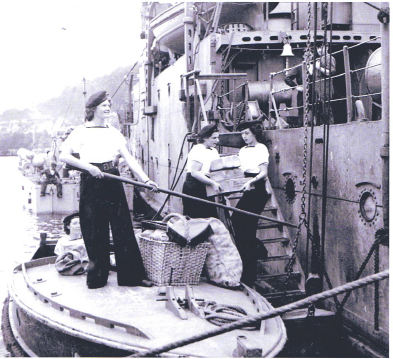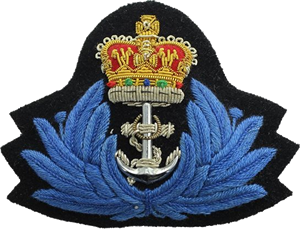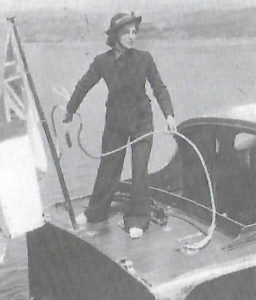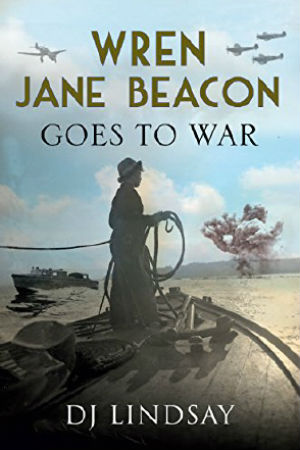Living in great times produces great personalities who meet the challenges that confront them. Often, they are quite ordinary people going about the everyday before finding themselves able to rise above the demands which those great times produce. One such was Jane Beacon. When war was declared on September third 1939 she was contemplating her imminent departure to Oxford to study French literature and philosophy. But responding to the strong sense of duty which lies in her family, she instead joins the Women’s Royal Navy Service (the ‘Wrens’) just a month after the declaration. From the start she meets head-on the practical demands of being the Navy’s first experimental boat crew wren. Beyond that, she is confronted by the Navy’s deeply entrenched misogyny, the social mores of the time, and the demands of authority clashing with her fierily independent spirit. Add to that the ever- lurking dangers of a skilled and determined enemy taking aggressive action and from the start she is challenged to the depths of her being. Such challenges produce heightened emotional responses too and her hot-bloodedness disguised by a veneer of English reticence adds a complex further dimension to her coming-of-age under extreme conditions. The Wren Jane Beacon and War series of novels tells of her rising to them all.
In following her tale, defiant and undefeated, from October 3rd 1939 to adventures in the Baltic Sea after being demobbed in 1946, the entire story of that convulsive period is told in the Wren Jane Series.
BOOK ONE
BOOK TWO
BOOK THREE
BOOK FOUR
The Cut: In 1941 there were still many professional workers on the English canal system, and they referred to the canals as ‘The Cut’. When sea experienced boat crew Wren Jane Beacon is sent to investigate the Cut and its people to see if Wrens might make crews for the freight-carrying narrow boats, she enters a very different world. As seen through the eyes of this sympathetic outsider, the lives and social structures of the boat people are explored in detail to give a lively picture of a historic way of life dictated by the circumstances in which they lived. Despite it being 1941, for much of her trip the war is far away.
BOOK FIVE
How many wild highs and desperate lows can a person take in a year? Petty Officer Wren Jane Beacon finds out the hard way, coming very close to the edge. Newly married to the love of her life in September 1941 and trusted by the Navy to be a trainer for the first boat crew Wrens’ course, her contribution to the war effort seemed secure and valued. But then her well-known fiery nature brings nothing but trouble. Losing fingers, losing her temper, and losing her hard-won status all pile on top of losing the two most important people in her life.
The Boats’ Crew Wrens of the Second World War were a remarkable group, doing a challenging job which often took them into danger and into the most demanding situations. Running its small boats round the Royal Navy’s ports and harbours in all weathers, day and night, they saw the war and its people at first hand. It was a romantic calling on the water, but a tough way of life on a scale never before experienced by the nice middle – and upper – class girls who largely made up the crews. Yet they never faltered, never complained, and did many things which at the start the Navy had considered quite beyond the ability of women to do.

Douglas Lindsay was born to the sea. Both his parents came from sailor families and his earliest days were spent living and playing on the harbourside at Scrabster during World War 2. A career in merchant shipping culminated in five years in command of large ro-ro freighters before he set up his own shipping company. Sadly, this was not successful.
Later, he interwove not unadeventurous shipping consultancy work with sailing – mainly as captain – on large square-rigged sailing ships. He also served in the Royal Naval Reserve as watch officer or navigator for many years. After retiring aged 75 he turned full time to the writing which had been his alternate life for many years. Bringing out the first in the Wren Jane Beacon series took four years of research, learning and understanding but since then those early years have allowed the subsequent books to be produced more quickly, always controlled by the large amount of research each has required. Work is continuing on the next book towards the ultimate aim of a twelve book series.

Wren Jane is a ripping good yarn – and you are left wondering what Jane will get up to next and when the next book will come out!
PETER LEPPARD





